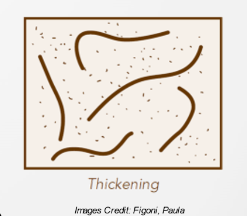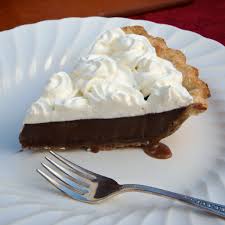1 Chapter 1-Identifying Thickeners and Gelling Agents
Learning Objectives
- What is Thickening?
- What is Gelling?
- What is the difference between the two?
- The functions of all thickening and gelling agents.
Thickening: Thickening happens when water and other molecules in a substance slowly bump around and entangle. Both polysaccharides and proteins have many molecules that link together to form chains, and these chains entangle with one another and moisture molecules to create a slow-moving substance (jam/preserves). Thickening also happens when moisture is trapped in swollen starch granules (pastry cream). And lastly, air can be trapped in liquid (foams-whipped cream) or in fat (emulsions-mayonnaise) to create thickening.

(Figoni, p. 324)
Gelling is the process by which water and other molecules in a substance entangle and can not move around at all! The same polysaccharides and proteins entangle so tightly, that the product is completely set (gelled substance-jello). Even though a gel seems to act like a solid, they are mostly liquid, but the liquid is so well trapped by the entangled polysaccharide and protein chains, that the liquid acts as a solid.

(Figoni, p. 324)
Some thickening and gelling agents can do both! That is, some thickeners will produce a gelled product if used in a high enough quantity, and some gelling agents will merely thicken a product if used in a low enough quantity. For example, gelatin, cornstarch, and pectin can do both!
 Pectin is often used to assist in thickening jams.
Pectin is often used to assist in thickening jams.
 Cornstarch can set a cream pie filling that holds its shape when cut.
Cornstarch can set a cream pie filling that holds its shape when cut.
While each type of thickener and gelling agent has its own set of specific functions and uses, all of these do have some functions in common:
- Structure-thickening and gelling agents give a product more or less texture.
- Stability-thickening and gelling agents provide overall stability to a product.
- Sheen-thickening and gelling agents give a glossy shine to glazes, sauces, and fillings.

